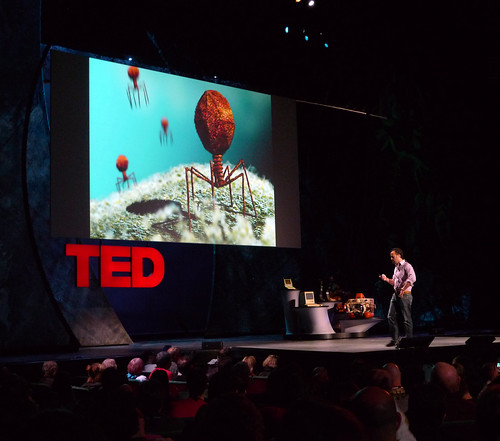Pandemics are a popular plot tool in media. They offer so much in the manner of tragedy, science, scope and heroism that they can be the main antagonist in epic films, novels and more. However, they can also make for an unrealistic flop of a story. Of course, in some instances such as zombie films, the unreal aspect is expected, but when it is meant to be realistic and the pandemic just is not, the story suffers horribly. It has to be done just right and the following pandemic stories in popular media were.

cc licensed flickr photo shared by Erik Charlton
“The Stand” by Stephen King
This novel and the made for television movie are the pandemic stories to end all pandemic stories. There are some supernatural aspects to the plot, which is not surprising given the storyteller, but the pandemic itself was realistic enough to horrify those who read it. The illness is known to the fictional world in the story as “Captain Trips.” It starts like the common cold, spreads rapidly and has no cure. The mortality rate is extraordinarily high, which is slightly unrealistic, but it was engineered, so it is not completely outside of the realm of possibility. What makes this pandemic so scary and so believable is that something very similar to it did happen in 1918. The Spanish Influenza pandemic was identical to “Captain Trips” in many ways. So, instead of asking if it can happen, readers should know that it practically did.
“Contagion” (2011)
“Contagion” is like “The Stand,” but without anything supernatural. The film involves a flu-like virus that eventually leads to seizures and death. It spreads like wildfire throughout the human population. The reason it is so virulent is that humans have never encountered it before. The human immune system has absolutely no defense against it. This is a very realistic scenario. If a virus with a high mortality rate, a high rate of transmission and no precedent in human history were to enter the human population suddenly, it could potentially reduce the world’s population drastically.
“Earth Abides” by George R. Stewart
What makes “Earth Abides” so realistic is not the devastating plague that overtakes the Earth and leaves few survivors. What makes it realistic is the aftermath. Once the bulk of human civilization is destroyed, nature comes back to reclaim its throne. Domestication becomes a thing of the past, buildings fall apart, roadways are overrun with foliage. This is what would certainly happen if a pandemic wiped out most humans.
“The Andromeda Strain” (1971) based on the novel by Michael Creighton
“The Andromeda Strain” is very unrealistic in many ways. The forms the strain takes and its very adaptability are beyond anything on Earth. However, the “Andromeda Strain” does not originate on Earth. It comes to Earth on a crashed satellite. Now, the idea of a virus surviving reentry into the atmosphere and the vacuum of space is unrealistic in itself. What is realistic about this film are the scientific tasks used by responding doctors. Of course, as for the rest of it, it is hard to tell how realistic it is. We have yet to encounter viruses from another world.
What Makes a Pandemic Realistic?
Pandemics in films and novels have to have some semblance of real pandemics. That is not that difficult, considering modern documentation of pandemics. Elements like mortality rates, spread of infection, medical response and aftermath should adhere to known biological functions or known behavior of pandemics. It does not have to have happened to have the potential to happen. Each of the above works have at least one of these qualities.
Amanda Fowler is a trauma nurse and guest author at Top Nursing Programs, a site with guides to the 10 best online nursing master’s programs.
